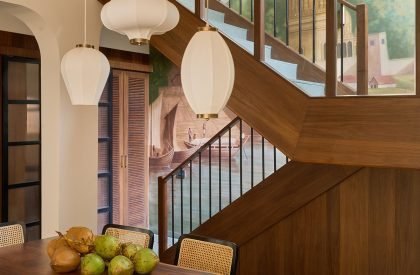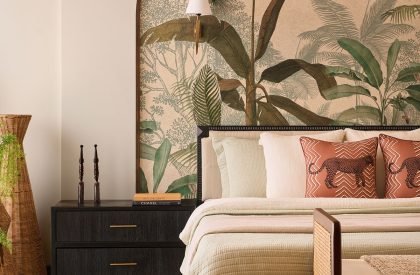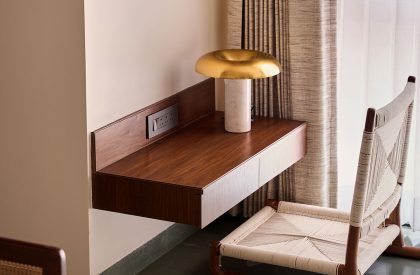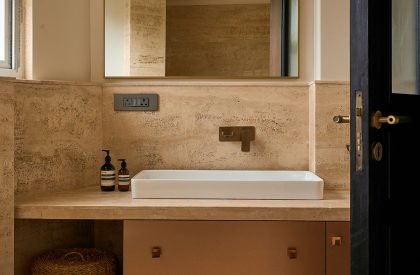Excerpt: Kavyam, an interior design project by Ikigai Studio, merges Indian artistry and minimalist style, creating a deeply meaningful and harmonious living experience. A thoughtful interplay of materials invites an exploration of both visual and tactile elements, drawing guests deeper into the home’s narrative. The project is more than just a home; it’s a testament to the art of blending tradition with modernity.
Project Description
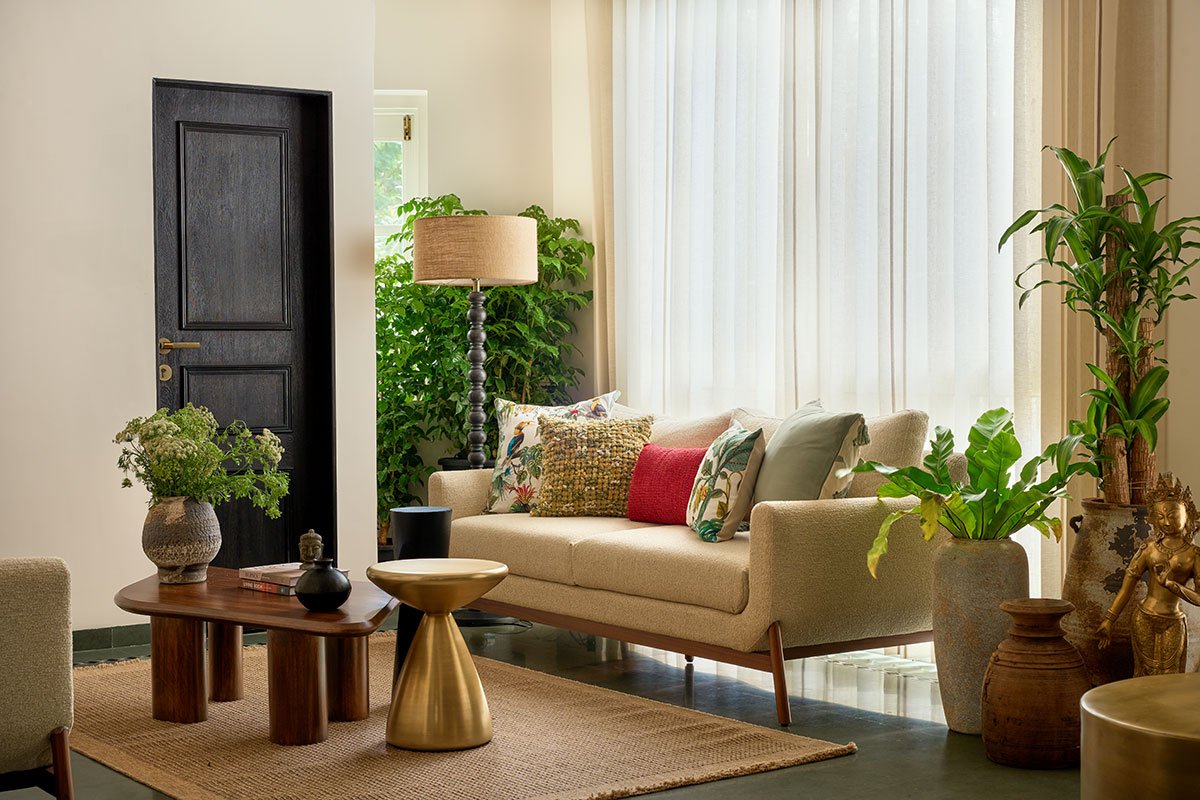
[Text as submitted by architect] “Architecture is a feeling that you experience in the third dimension; it’s not just what you see—it’s an entire emotion,” says Ar. Anuja. Guided by this philosophy, she reimagined her home as a living poetic composition of space—Kavyam. This home, with its rich history, has been lovingly transformed into a sanctuary that marries the grace of traditional Indian roots with the sleek elegance of contemporary design.
The journey began with reimagining the entrance. As you step inside, the symphony of nature accompanies you—rustling leaves and the distant melody of water create a serene backdrop.

The old entry was dim and cramped, forcing visitors to stoop under a staircase slab. Anuja saw potential in the overlooked garden and decided to incorporate it into the home, creating a spacious and inviting lobby. This once-garden space now welcomes guests with a Ganesh idol as its centrepiece. Behind it, vibrant wallpaper inspired by Coromandel Coast textiles adds a touch of cultural richness, setting the tone for the entire home.

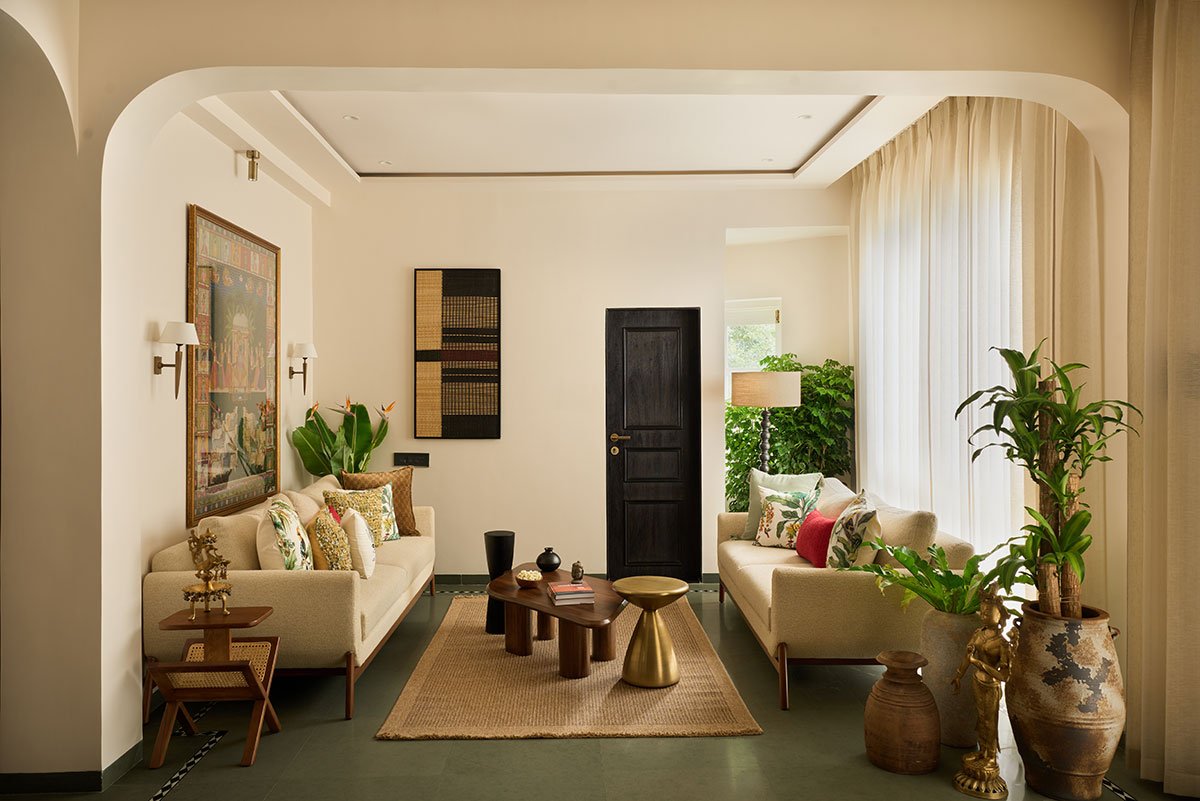

The next chapter unfolded on the ground floor, formerly a Panchakarma treatment centre managed by Anuja’s mother-in-law. “We could have retained the apothecary atmosphere,” Anuja shares, “but I envisioned a design that integrates with nature and tells a new story.”
The space has been reshaped into a lively and cosy living and dining area, now a central gathering spot, for family and friends to gather and create cherished memories.
The home embraces Indian craftsmanship in every corner. Within the living room, traditional art takes centre stage. A vibrant Pichwai painting of Lord Shreenathji from Rajasthan graces the wall, its deep, expressive hues narrating a story of devotion and artistry.
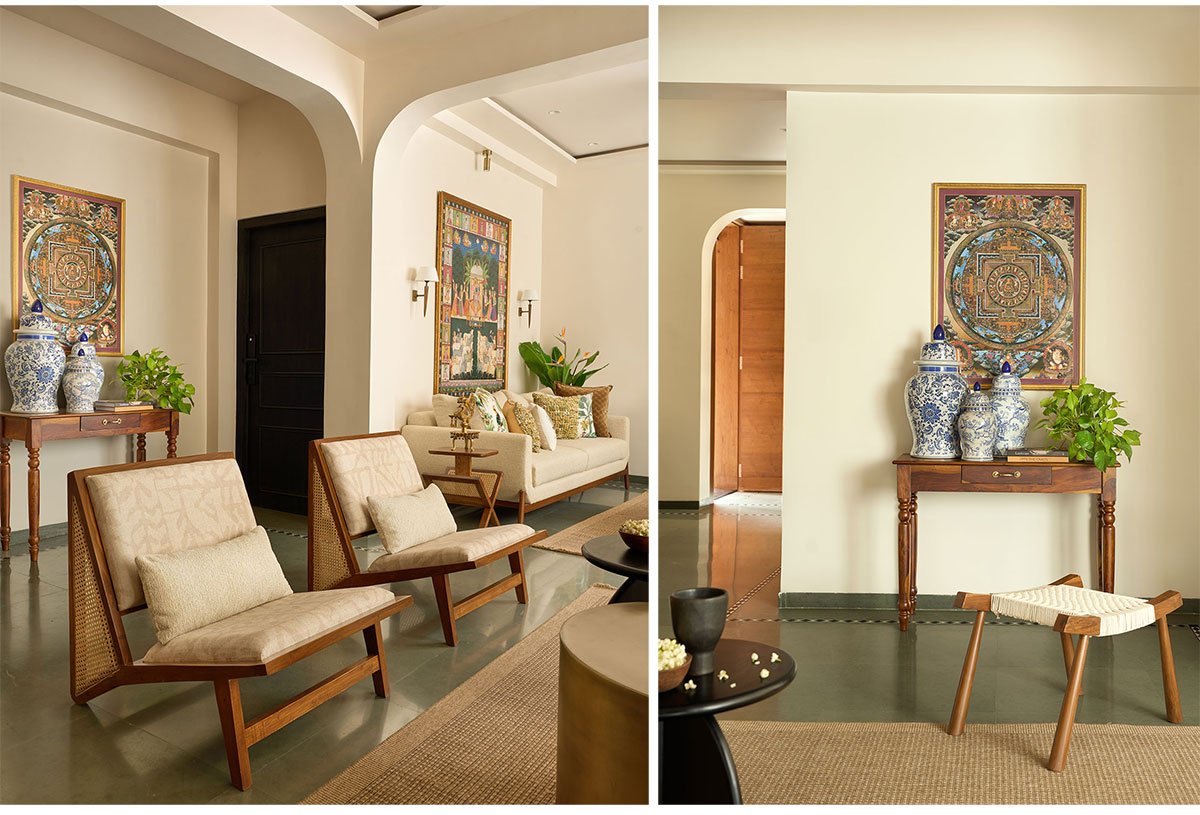

Nearby, an intricate Thankha Mandala from Himachal Pradesh unfolds with delicate finesse, its finely detailed patterns reflecting the rich heritage artisanship passed down through centuries.
Each step through the space reveals a narrative through its tactile experiences. The Kota stone flooring, enhanced with delicate white and black marble inlays from Kishangarh, creates a subtle border that flows through the spaces. In the living room, brick wall cladding adds a raw texture that contrasts elegantly with modern elements. Wicker vases and cane furniture introduce a touch of rustic charm, while metal doors reminiscent of temple gates lead to the serene prayer room, adding a spiritual dimension.
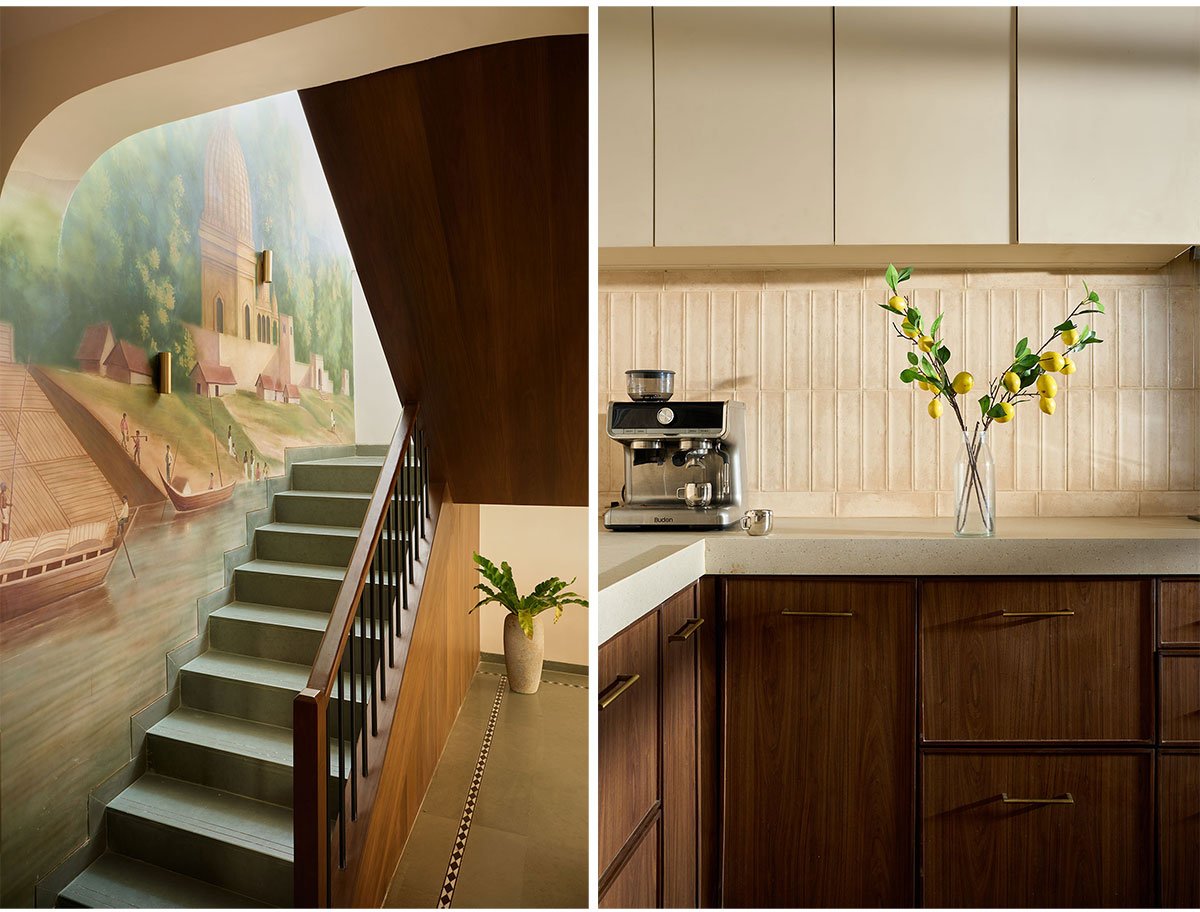
The juxtaposition of organic wood and sleek brass accents, like the Annam diya and brass side table, whispers of Indian royal luxury. Blue-and-white porcelain evokes the grandeur of the Mughal era, while the dining space, with its grand 10.5-foot ceiling, impresses with its sense of majesty.
The grand staircase, framed by wooden panelling, unveils a striking mural on the double-height wall. “Once an exterior feature, the staircase is now seamlessly integrated into the home’s interior,” says Anuja. “We wanted to bring Indian artisanry and grandeur into this space.” The mural, hand-painted by Mumbai artist Rudranee , depicts a Hindu temple against an icy lake in soothing neutral tones, complemented by a sleek steel-and-wood railing that enhances the design.


“The upper floor used to include two bedrooms, kitchen, and dining areas. I’ve always dreamed of a large, open bedroom, so we combined these spaces to create a spacious retreat,” she reveals. The room embraces a raw, earthy feel, highlighted by striking tropical wallpaper behind the bed that makes a bold statement. Woven wicker floor vases introduce rustic charm, while an Ottoman bench of wood and cane enhances the room’s natural textures.
A Japanese-inspired low table and chair offer a serene spot for meditation or study. The dressing area, adorned with a retro-style mirror and illuminated by vintage lights, adds a nostalgic touch, weaving together the space’s narrative.

“To me, Kavyam is more than just a home—it’s a reflection of how architecture can evoke emotions and express our personal journey,” Anuja shares with heartfelt emotion. The home weaves a poem, with each element telling its own story. By blending the past with Indian artistry and minimalist design, it offers a living experience that feels both deeply meaningful and perfectly harmonious. This riverside retreat is more than just a home; it’s a journey through time, a testament to the art of blending tradition with modernity.











